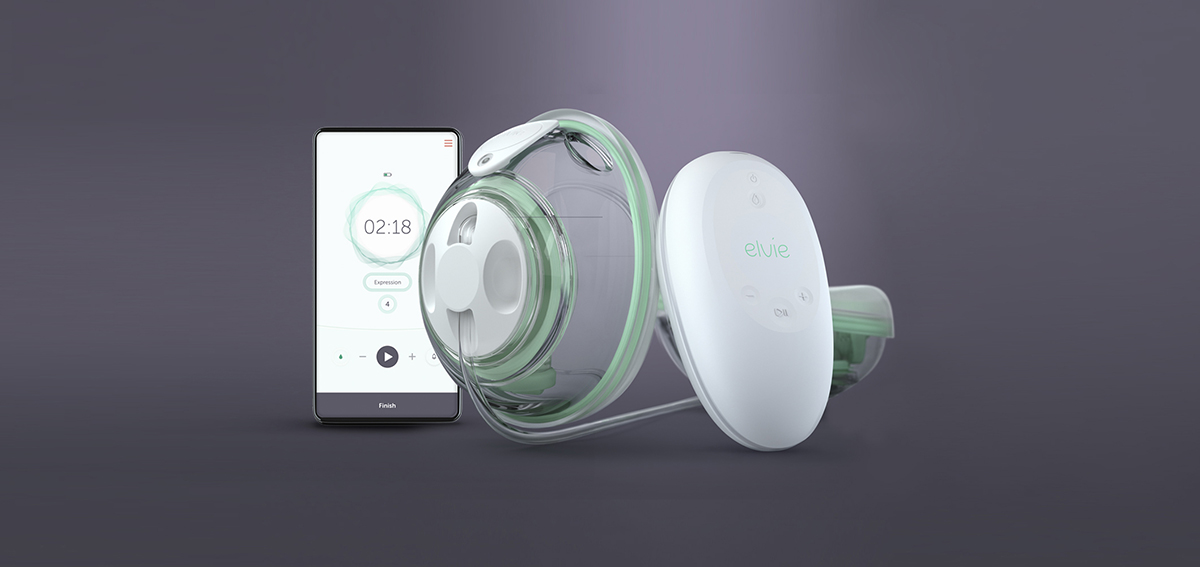Home>Finance>How Often Can You Get A Breast Pump Through Insurance?


Finance
How Often Can You Get A Breast Pump Through Insurance?
Published: November 14, 2023
Learn how often you can get a breast pump through insurance and save money with our expert insights and tips. Discover the financial benefits today!
(Many of the links in this article redirect to a specific reviewed product. Your purchase of these products through affiliate links helps to generate commission for LiveWell, at no extra cost. Learn more)
Table of Contents
Introduction
When it comes to breastfeeding, having access to a breast pump can make a world of difference for new mothers. It offers convenience, flexibility, and the ability to ensure a consistent milk supply even when you can’t be with your baby. However, breast pumps can be quite costly, which is why understanding your insurance coverage is important.
In recent years, insurance companies have recognized the health benefits of breastfeeding and have started providing coverage for breast pumps. This means that as an expectant or new mother, you may be eligible to receive a breast pump at no cost or a reduced cost through your insurance.
But how often can you actually get a breast pump through insurance? The answer to this question depends on several factors, including your insurance policy, the type of coverage you have, and any medical circumstances that may impact the frequency of coverage.
In this article, we will explore the different types of breast pump coverage, the factors that affect the frequency of coverage, and the steps you can take to obtain a breast pump through insurance. So, let’s dive deeper into this topic and equip you with the information you need to navigate the world of breast pump coverage.
Understanding Insurance Coverage for Breast Pumps
Insurance coverage for breast pumps can vary depending on your insurance provider and policy. It’s important to understand the different types of coverage available to determine how often you can get a breast pump through your insurance.
Many insurance companies offer coverage for breast pumps as part of their maternity benefits. This coverage is usually provided under the Affordable Care Act (ACA), which requires most insurance plans to offer breastfeeding support and supplies, including breast pumps, without any out-of-pocket costs for the policyholder.
There are generally two types of coverage options for breast pumps:
- Free Breast Pumps: Some insurance plans offer fully covered breast pumps, meaning you can receive a breast pump at no cost to you. These breast pumps are typically basic manual or electric pumps that meet the minimum requirements set by the insurer. While these pumps may not have all the bells and whistles of higher-end models, they are still effective tools for expressing breast milk.
- Partial Coverage: Other insurance plans provide partial coverage for breast pumps. This means that you will be responsible for paying a portion of the cost of the pump. The coverage amount may vary depending on your insurance policy. With partial coverage, you have more flexibility in choosing a breast pump that suits your specific needs and preferences.
It’s important to note that not all insurance plans are required to provide breast pump coverage under the ACA. Certain plans, such as grandfathered plans and some self-funded plans, may be exempt from this requirement. In these cases, you may need to contact your insurance provider directly to inquire about breast pump coverage and eligibility.
Furthermore, insurance coverage for breast pumps may also depend on the specific type of insurance you have. For example, Medicaid may provide coverage for breast pumps, but the coverage guidelines and requirements may vary from state to state. It’s advisable to check with your specific Medicaid program to understand the coverage options available to you.
Types of Breast Pump Coverage
When it comes to breast pump coverage, there are generally two types of options available: rental coverage and purchase coverage. The type of coverage you have will determine whether you are eligible to rent a breast pump or if you can purchase one through your insurance.
1. Rental Coverage: Some insurance plans offer coverage for breast pump rentals. With rental coverage, you can receive a breast pump on a temporary basis, usually for a specific duration such as a few weeks or months. This option is beneficial for mothers who may only need a breast pump for a limited time or for those who want to try out different types of pumps before deciding to purchase their own. Keep in mind that rental coverage may require you to return the breast pump to the provider once your rental period is over.
2. Purchase Coverage: Most insurance plans provide coverage for the purchase of a breast pump. This means you can obtain a breast pump to keep and use as needed. The coverage may vary depending on the insurance policy, ranging from fully covered pumps to partial coverage where you may still need to contribute a portion of the cost. Purchase coverage allows you to choose a breast pump that meets your specific needs and preferences, and you can use it as long as necessary.
When it comes to selecting a breast pump, there are typically two options available: manual pumps and electric pumps. Manual pumps are operated by hand and are generally more affordable, compact, and portable. Electric pumps, on the other hand, are powered by electricity or batteries and offer greater convenience and efficiency. Depending on your insurance coverage, you may have the option to choose between these two types of pumps.
It’s important to carefully review your insurance policy to understand the specific details of your breast pump coverage. This includes any limitations or requirements, such as obtaining the pump from an in-network provider, obtaining a prescription from your healthcare provider, or providing documentation of medical necessity.
By understanding the type of breast pump coverage available to you, you can make an informed decision on whether to rent or purchase a breast pump and ensure that you can adequately meet your breastfeeding needs.
Frequency of Breast Pump Coverage
The frequency of breast pump coverage can vary depending on your insurance policy and the specific guidelines set by your insurance provider. While there is no set standard for how often you can get a breast pump through insurance, there are some general considerations to keep in mind.
Typically, insurance coverage for breast pumps is limited to one pump per pregnancy. This means that if you have multiple pregnancies, you may be eligible to receive a breast pump for each pregnancy. However, it’s important to note that insurance providers may have specific waiting periods between pregnancies before you can qualify for another breast pump.
Additionally, many insurance companies adhere to the recommendation set by the American Academy of Pediatrics (AAP), which states that breastfeeding should be supported for the first year of a baby’s life. As a result, some insurance policies may provide coverage for a replacement pump after one year if needed. This allows you to continue breastfeeding and expressing milk for as long as you and your healthcare provider deem necessary.
Some insurance providers may have restrictions on when you can obtain a breast pump. For example, they may require you to have the pump delivered a certain number of weeks before your due date. This is to ensure that you have the pump ready for use when your baby arrives.
It’s important to thoroughly review your insurance policy or contact your insurance provider directly to understand the specific guidelines and limitations on the frequency of breast pump coverage. They will be able to provide you with detailed information on the eligibility criteria, waiting periods, and any additional requirements that may apply.
Remember that the frequency of breast pump coverage can also be influenced by any medical circumstances or complications that arise during your pregnancy or postpartum period. In certain cases, your healthcare provider may deem it medically necessary for you to have an additional breast pump, and your insurance may provide coverage accordingly.
By being aware of the guidelines and limitations surrounding the frequency of breast pump coverage, you can effectively plan and make the most of your insurance benefits to support your breastfeeding journey.
Factors Affecting Frequency of Coverage
While the frequency of breast pump coverage generally depends on your insurance policy, there are several factors that can affect how often you can obtain a breast pump through insurance. These factors include:
1. Pregnancy Duration: Some insurance providers may have specific guidelines regarding when you can be eligible for a breast pump. They may require you to be a certain number of weeks into your pregnancy before allowing you to request a breast pump. It’s important to check with your insurance provider for any timing restrictions.
2. Medical Necessity: Certain medical circumstances or complications in your pregnancy or postpartum period may require you to have a breast pump. Your healthcare provider can determine if a breast pump is medically necessary, and your insurance may provide coverage based on their recommendation. Examples of medical necessity may include preterm birth, latching difficulties, or a medical condition that prevents direct breastfeeding.
3. In-Network Providers: Insurance companies often have a network of preferred providers. They may require you to obtain your breast pump from an in-network provider in order to receive coverage. It’s important to check if the supplier you plan to use is in-network and if not, whether your insurance will still provide coverage, albeit at a lower rate.
4. Prescription Requirement: Some insurance policies may require a prescription from your healthcare provider before providing coverage for a breast pump. You may need to provide the prescription to the supplier or your insurance company as proof of medical necessity.
5. Insurance Plan Exemptions: Certain insurance plans, such as grandfathered plans or self-funded plans, may be exempt from the breast pump coverage requirement under the Affordable Care Act. It’s important to check whether your specific plan includes breast pump coverage and what the applicable guidelines and limitations may be.
It’s crucial to familiarize yourself with the factors that may affect the frequency of breast pump coverage provided by your insurance. This will help you understand the specific requirements and limitations in order to make informed decisions about obtaining a breast pump and maximizing your insurance benefits.
Steps to Obtain a Breast Pump Through Insurance
Obtaining a breast pump through insurance can be a straightforward process if you follow the necessary steps. Here is a general guide to help you navigate the process:
1. Check Your Insurance Coverage: Review your insurance policy or contact your insurance provider to determine if breast pump coverage is included in your plan. Understand the type of coverage you have (free or partial) and any specific guidelines or restrictions that may apply.
2. Research and Select a Supplier: Find an in-network supplier that offers breast pumps covered by your insurance. Check if they have a wide range of breast pump options to meet your needs and preferences. Ensure that the supplier is reputable and provides quality products and service.
3. Obtain a Prescription: If your insurance policy requires a prescription, schedule an appointment with your healthcare provider. They can evaluate your specific circumstances and provide a prescription for a breast pump, if deemed medically necessary. Ensure that the prescription includes all the necessary information, such as your name, the type of pump recommended, and the duration for which the pump is needed.
4. Contact the Supplier: Reach out to the selected supplier and inquire about the process to obtain a breast pump through insurance. Provide them with your insurance information, prescription (if required), and any other relevant documentation they may need. Confirm that they are in-network with your insurance provider and can process the claim on your behalf.
5. Complete Necessary Paperwork: Fill out any forms or paperwork required by the supplier or your insurance company. This may include providing your personal and insurance information, signing consent forms, or completing a rental agreement if applicable.
6. Receive and Use the Breast Pump: Once the paperwork is complete and your claim is processed, the supplier will ship the breast pump to your designated address. Follow the instructions provided by the supplier for assembling, using, and maintaining the breast pump. Reach out to the supplier if you have any questions or need further assistance.
Remember to keep a copy of all documentation, including the prescription, receipts, and any communication with the supplier or insurance company. This will serve as proof of your breast pump coverage and may be important for future reference or reimbursement.
If you encounter any challenges during the process or have questions about your coverage, don’t hesitate to contact your insurance provider for guidance and support. They can provide you with specific information and clarify any concerns or confusion you may have.
By following these steps, you can successfully obtain a breast pump through your insurance and ensure that you have the necessary tools to support your breastfeeding journey.
Additional Considerations for Breast Pump Coverage
While the process of obtaining a breast pump through insurance may seem straightforward, there are a few additional considerations to keep in mind to ensure a smooth experience:
1. Timing: Be mindful of the timing when requesting a breast pump through insurance. Some insurance companies may have specific guidelines on when you can submit your request, such as a certain number of weeks before your due date. Plan ahead and give yourself enough time to complete the necessary steps, including obtaining a prescription if required.
2. Insurance Network: It’s important to understand which suppliers are in-network with your insurance provider. Working with an in-network supplier ensures that the breast pump will be covered at the highest rate possible. If you choose to work with an out-of-network supplier, you may still receive coverage, but it may be at a lower rate, and you may need to pay more out of pocket.
3. Upgrade Options: If your insurance plan only covers a basic breast pump, but you prefer a higher-end or more advanced model, you may have the option to upgrade. However, you should be aware that you may be responsible for paying the difference in cost between the covered pump and the upgraded model.
4. Customer Support: Research the customer support and after-sales service provided by the supplier. Understand their policies regarding returns, exchanges, and warranty coverage. In the event that you encounter any issues with the breast pump, having reliable customer support can make the process of resolving any concerns much easier.
5. Maintenance and Replacement Parts: Breast pumps require regular maintenance, including cleaning and replacing certain parts, such as tubing and membranes. Check with your insurance provider or supplier to understand if replacement parts are covered and how you can obtain them when needed.
6. Pump Insurance Coverage Period: Keep in mind that your insurance coverage for a breast pump may have a specific period, such as the duration of your breastfeeding journey or up to one year after giving birth. After this period, you may need to explore other options, such as purchasing replacement parts or obtaining a new breast pump if necessary.
Remember to thoroughly review your insurance policy and any documentation provided by your insurance provider or supplier. Understanding the additional considerations will help you make informed decisions throughout the process and ensure that your breast pump coverage meets your needs and expectations.
Finally, don’t hesitate to reach out to your healthcare provider or insurance company if you have any questions or concerns. They are there to assist you and provide the necessary guidance to ensure a successful breast pump coverage experience.
Conclusion
Navigating the world of insurance coverage for breast pumps can seem overwhelming, but understanding the options available to you is essential. By familiarizing yourself with the types of coverage, the factors that affect the frequency of coverage, and the necessary steps to obtain a breast pump through insurance, you can make the most of your benefits and support your breastfeeding journey.
Whether your insurance provides fully covered breast pumps or partial coverage, it’s important to explore your options and select a pump that meets your needs and preferences. Take advantage of the resources provided by your insurance provider to find in-network suppliers and understand any specific guidelines or requirements for obtaining a breast pump.
Keep in mind that the frequency of coverage may be limited to one pump per pregnancy, but certain circumstances, such as medical necessity, may warrant additional coverage. Be sure to communicate with your healthcare provider and insurance company to ensure that you have the necessary documentation and support when requesting a breast pump.
Throughout the process, remember to stay organized by keeping copies of all relevant paperwork and documentation. This will serve as proof of your coverage and may be important for future reference or reimbursement.
Lastly, be mindful of any additional considerations, such as timing, insurance network, upgrade options, customer support, and maintenance. By considering these factors, you can make informed decisions and have a positive experience with your breast pump coverage.
Breastfeeding is a wonderful and important journey, and having access to a breast pump through insurance can make it even more manageable. Ensure that you take advantage of your insurance benefits and explore the options available to you. With the right knowledge and preparation, you can obtain a breast pump through insurance and support your breastfeeding goals with ease.














